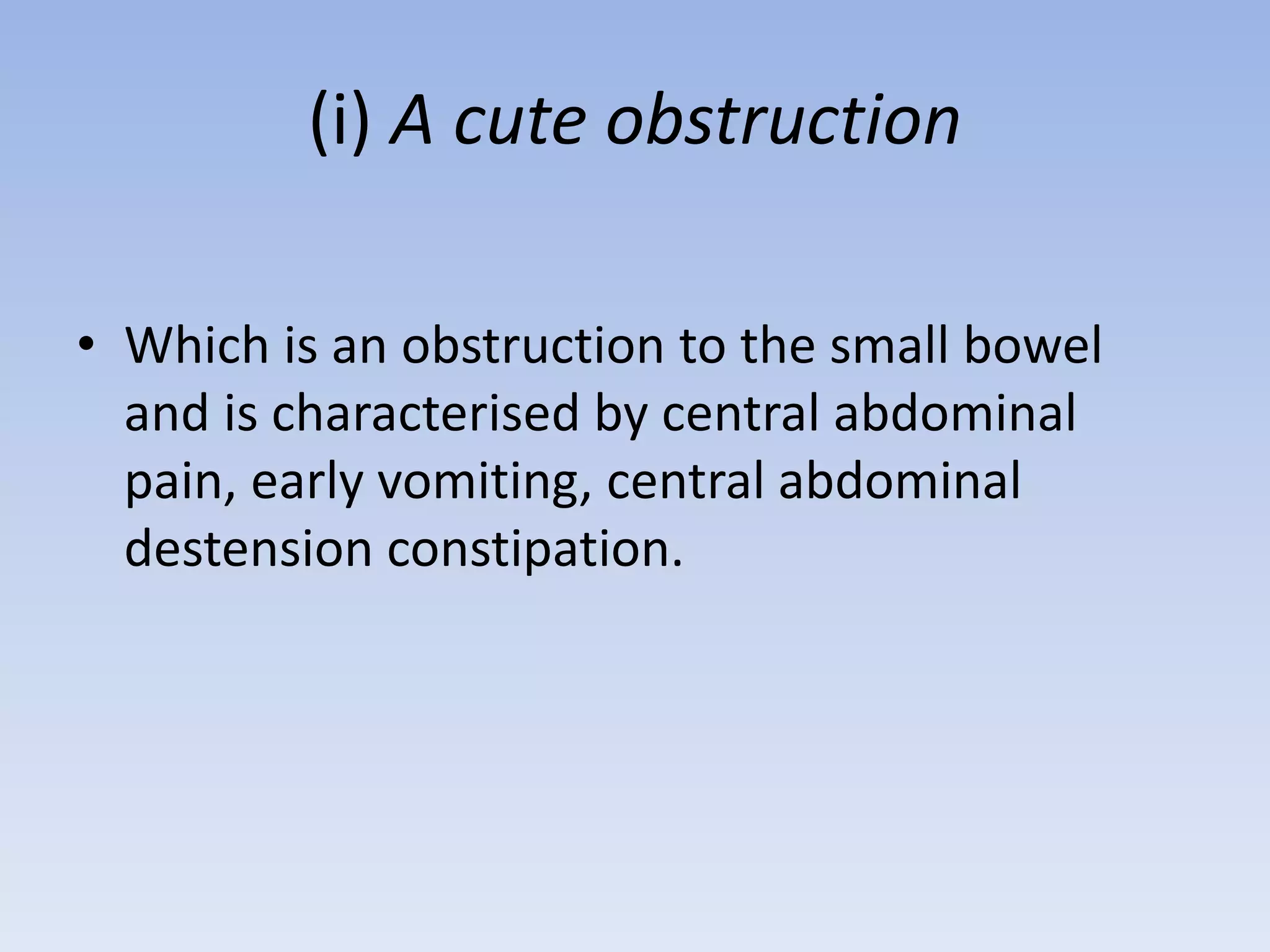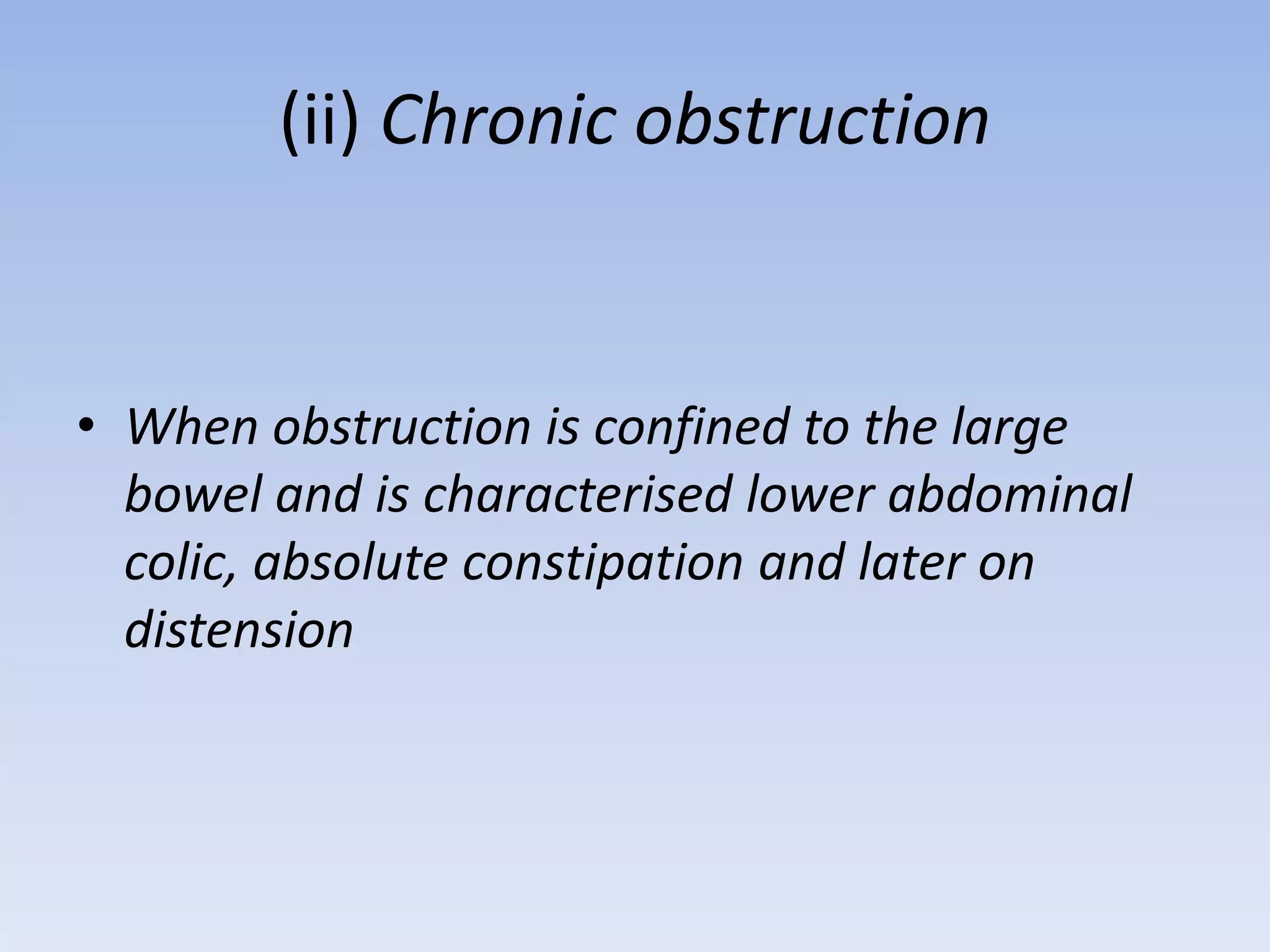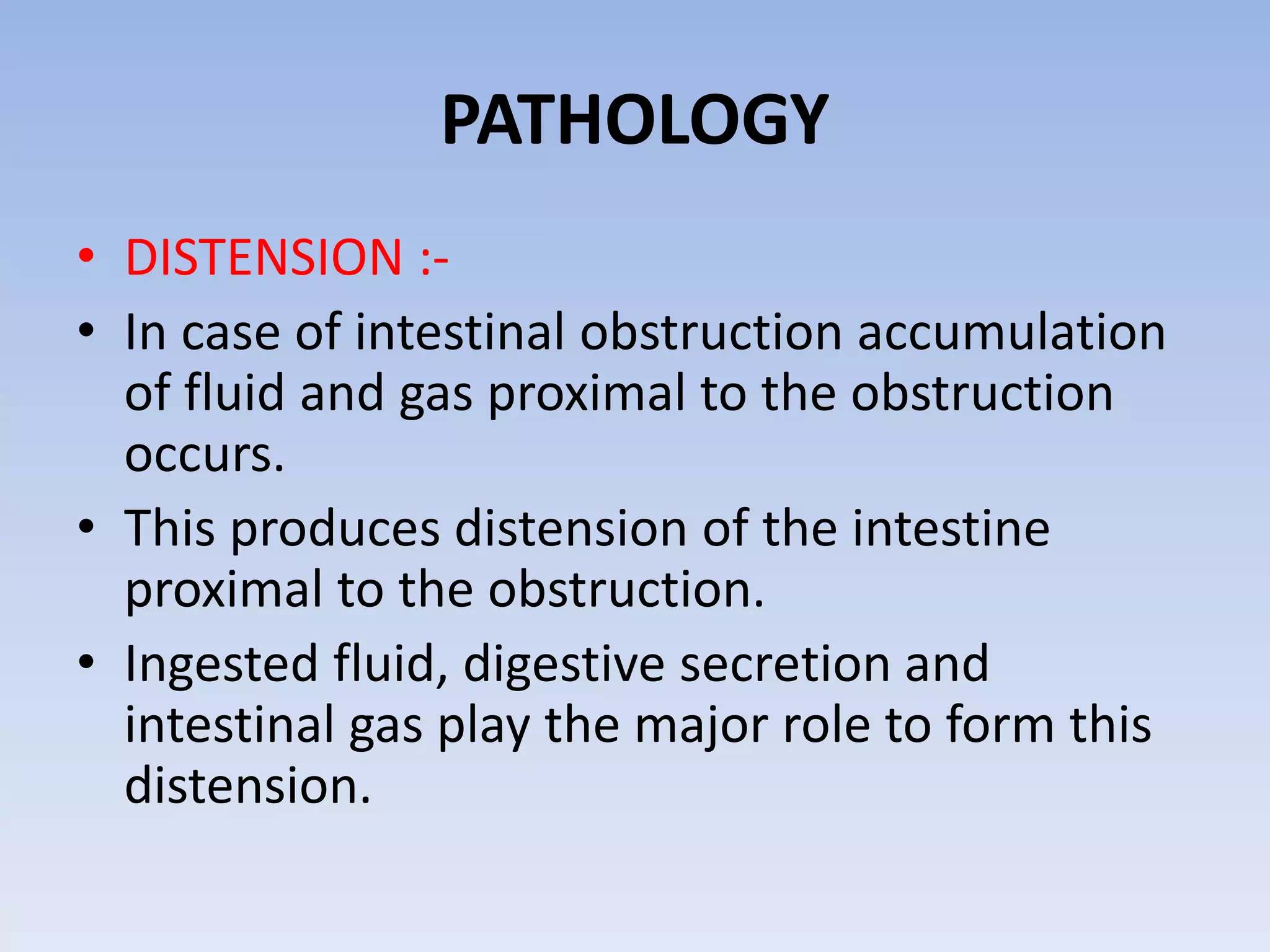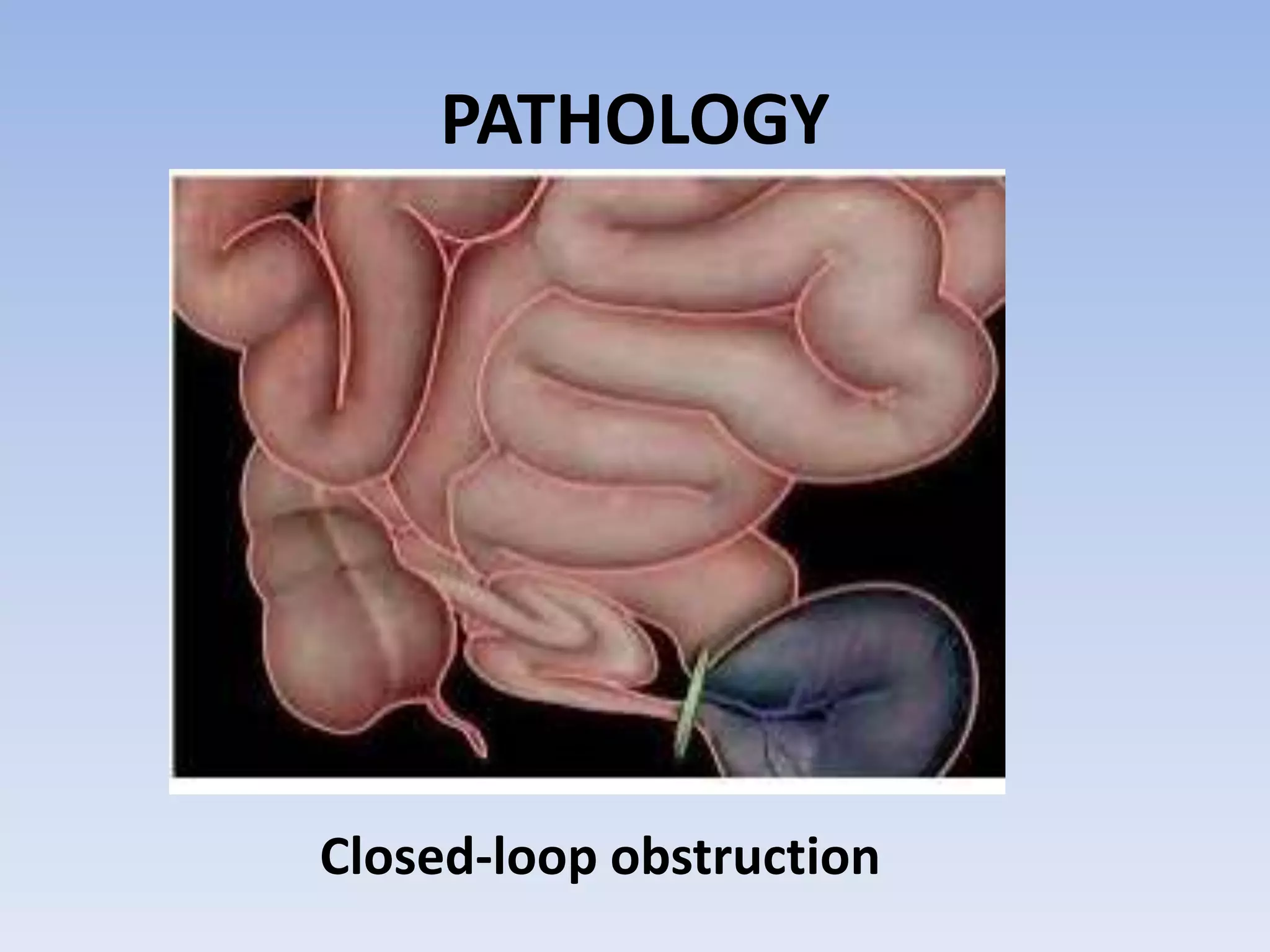Intestinal obstruction occurs when the normal progression of intestinal contents is obstructed. This can be due to mechanical obstruction from lesions inside or outside the bowel wall, or paralytic ileus where intestinal muscle function is impaired. Mechanical obstruction causes distension of the intestine above the obstruction from fluid and gas accumulation. This can lead to electrolyte imbalances and metabolic abnormalities. Strangulated obstruction involves impaired blood flow to the obstructed intestine, which can progress to tissue death if not resolved.
































































